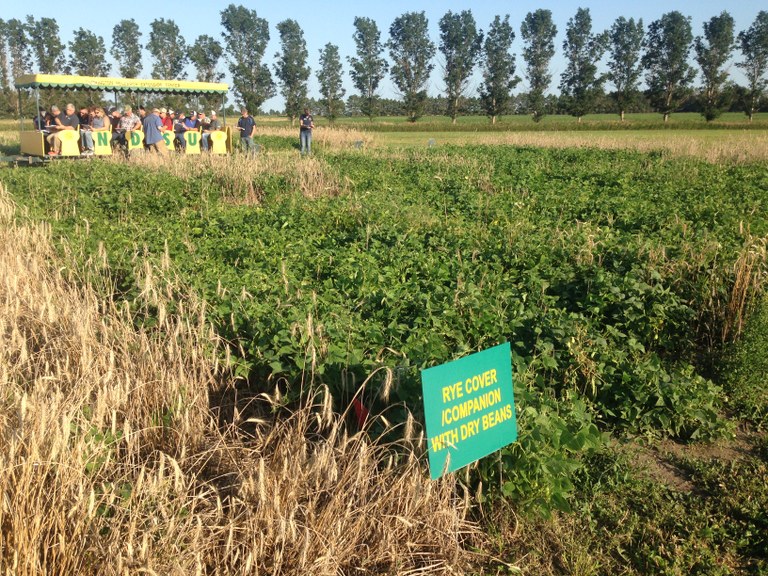Pinto Bean Production with Winter Rye – First year results
A field study was initiated at the CREC with support from Northarvest Dry Bean Growers Association to examine the performance of pinto bean with winter rye grown as a cover or companion crop. ‘ND Dylan’ rye was seeded in 7-inch rows at about 90 lb/A on September 20, 2016. ‘Lariat’ was direct planted into rye or rye residue (except tilled plots) in 21-inch rows on May 31, 2017. Rye (tillering stage) was preplant (PP) terminated by tillage on April 28 to establish a ‘check’ (treatment 1). Also, rye was PP terminated by glyphosate on April 28 (treatment 2). Rye (boot stage) was late PP terminated by glyphosate on May 27 (treatment 3). Treatment 4 plots were land rolled on June 6 with rye in the flowering stage. Raptor herbicide was applied on June 26 for terminating rye (dough stage) in treatments 4-5, and general weed control for treatments 1-3. Pinto bean seed was harvested with a plot combine in mid-October.

Early PP rye termination resulted in quicker pinto bean plant emergence (5-8 days), flowering (7-21 days), and maturity (5-26 days) compared to late PP and post-emergence (POST) rye termination (Table). Also, bean plants generally were taller, had a darker green color, and greater canopy closure with early PP rye termination versus later rye termination. With the exception of the early PP rye termination with herbicide, plant stand was similar among treatments. Seed yield was highest with early PP rye termination and lowest with POST rye termination. Test weight and seed size were similar among treatments with PP rye termination and greater than POST rye termination. The advantages with plant development, and seed yield with the early PP rye termination were likely due to greater soil moisture availability from reduced rye growth compared to the results with delaying rye termination, especially POST.
The study will continue in 2018.
Greg Endres
Gregory.Endres@ndsu.edu
Extension Agronomist


